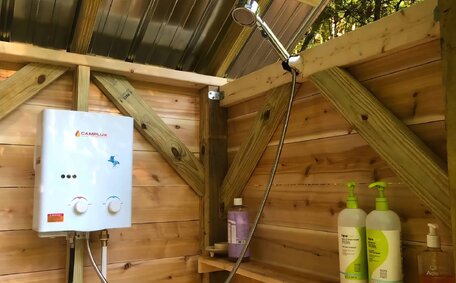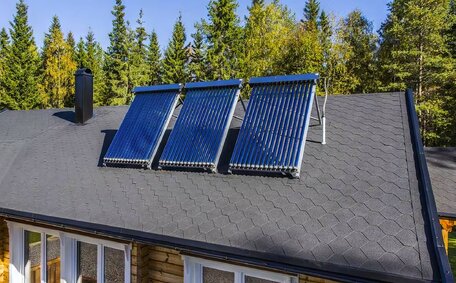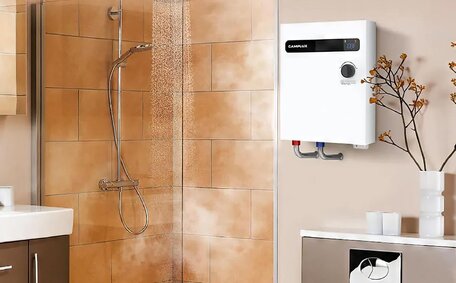Introduction to Hot Water Temperature
Setting your water heater too high can lead to scalding risks for young children and the elderly, while low temperatures may foster bacterial growth, posing health risks.
What temperature should your water heater set to ensure safety and efficiency? It is typically between 120 and 140 degrees Fahrenheit. Adjusting your hot water unit to the right temperature ensures both safety and energy efficiency.
As licenced plumbers serving Cranebrook and the greater Sydney area, the specialists at Cranebrook Plumbing know how to help homeowners regulate their heater for the ideal temperature. Our plumbers ensure the safety and efficiency of your hot water system, regardless of it being gas, electric, or a combination thereof.
Checking Current Hot Water Temperature
The first step in adjusting your electric water unit’s temperature is to verify the current setting.
To check the temperature of your electric hot water heater, run a tap and use a thermometer once the water flow stabilises. A safe water temperature for most households is around 50 degrees Celsius (120 degrees Fahrenheit), which reduces scalding risk and provides sufficient heat for everyday tasks. It’s essential to know your current setting so you can adjust your electric water heater to prevent scalding or to increase temperature against bacteria as needed.
Locating Temperature Controls
To learn how to adjust your temperature settings, you first must grasp how to naturally incorporate alteration techniques into your specific water heater’s design. Here is where you can find the dials, switches or valves to change the temperature setting:
- For your electric hot water heaters with storage tanks: There is typically a thermostat dial or knob on the exterior of the tank. Some models may have controls behind an access panel instead.
- Gas storage tank heaters: Look for a gas valve near the bottom with a temperature dial, along with a pilot light.
- Tankless heaters: You’ll find an electronic control panel, usually on the front, with buttons to adjust the temperature up or down.
If you’re not sure how to adjust temperature for optimal comfort, contact our Cranebrook plumbers, and we’ll guide you to fine-tune your water to your satisfaction or make the necessary adjustments for you.
Adjusting Electric Water Heater Temperature
Understanding how to manage the temperature on electric water heaters is quite straightforward. Start by locating the heater temperature settings on the thermostat dial or control panel on your electric heater. Safety first!
Always power off the heating unit at the circuit breaker before adjusting temperatures. If there are both thermostats for the upper and lower heating elements, it’s essential to calibrate them to the identical setting.
When learning how to turn down the temperature, slowly turn the dial counterclockwise or press the down arrow if you have digital controls. Adjusting the temperature in small increments, less than 5 degrees Celsius at a time, helps you find the right warmth level for your electric water heater. Confirm accuracy by evaluating the water temperature at the faucets after granting sufficient time for the tank’s temperature set to normalize.
The experts at Cranebrook Plumbing can assist if you have any trouble adjusting temperature water on your unit’s controls. For assistance in achieving the ideal water temperature, feel free to contact us at Cranebrook Plumbing.
Adjusting Gas Water Heater Temperature
To adjust a gas water heater’s temperature, locate the gas valve and dial near the tank’s base, which controls the system’s temperature.
Start by ensuring the pilot light is lit, or if needed, relight pilot following the manufacturer’s instructions. Then adjust the dial carefully to fine-tune the temperature your water heater offers, usually aiming for a cosy 120-140 degrees Fahrenheit. Turning the dial clockwise increases, and turning it counterclockwise decreases the temperature.
OSHA advises setting your hot water heater to at least 140 degrees Fahrenheit to curtail Legionella bacteria risk.
Consider installing a tempering or thermostatic mixing valve to your gas water heater to manage temperatures and mitigate scalding risks. inaccurate gas appliance adjustments might lead to perilous gas leaks, so we recommend reaching out to a licensed plumber if you have any issues, as hot water can certainly be affected.
Adjusting Tankless Water Heater Temperature
Tankless or on-demand water heaters come with an electronic control panel to adjust the heaters’ temperature. Consult your owner’s manual to master the temperature control and locate the seemingly elusive settings for your model. Tankless heaters often feature buttons that adjust the temperature precisely, whether up or down.
To maintain safety and efficiency, keep tankless water heaters set between 49-60 degrees Celsius. Setting the water heater below 50 degrees Celsius may lead to bacterial growth, while going above it significantly heightens scalding risks.
As one of the leading plumbing companies in Cranebrook, our business is equipped with technicians who have extensive experience installing and servicing hot water systems. We’re happy to help adjust your water systems controls if needed or make suggestions to improve your hot water system.
Testing Adjusted Temperature
Post-adjustment, verify that the water temperature aligns with the heater’s new setting. Take into account that stabilisation at the new temperature may require a few hours, critical for reducing scalding hazards.
Test your hot water heater by running the tap until the water heats up, usually taking a few minutes. Use a thermometer under the tap to Check the temperature of the flowing water and wait for the reading to settle. It should match the temperature you set the water heater to within a few degrees up or down.
Installing Mixing Valves
Installing thermostatic mixing valves can help prevent scalding and ensure steady water temperatures throughout your home. Mixing valves automatically blend hot and cold water to maintain a consistent, safe temperature at each tap, even if pressures fluctuate elsewhere in your plumbing system.
To ensure your safety, seek a licensed plumber from Cranebrook Plumbing for the installation of mixing valves. A heater set with meticulous care ensures effectiveness and precision, which I’m sure our experts can attest to. Our experts will set the mixing valves to a safe temperature range of 120-140 degrees Fahrenheit.
Contact Cranebrook Plumbing today if you’re interested in installing thermostatic mixing valves in your home. We provide fast, professional installations to safeguard your household. Mixing valves also reduce energy costs by optimising your hot water usage.
Maintaining Proper Temperature
To keep your hot water system running safely and efficiently, it’s important to maintain the hot water heater temperature accurately over time. Every three months, assess your hot water system’s performance using a thermometer at your taps to ensure consistent temperatures. Take note if there are any fluctuations up or down from your desired setting.
Routine maintenance, including checking the relief valve, can also help reduce your overall costs by optimising performance and extending the life of your water heater. Drain sediment from tank heaters yearly to maintain their efficiency and prolong their operating life.
If the water temperature deviates significantly despite adjustments, contact us immediately. Significant variation from your set point can indicate issues like a faulty thermostat, buildup in electric heating elements, or problems with gas valves. Our experts can troubleshoot precisely what requires adjustment or repair for safe and reliable hot water.
When to Call a Professional
There are a few signs that indicate it’s time to call in a professional plumber to assist with your hot water system:
- Water temperature fluctuates widely or unexpectedly
- You have no hot water at all
- The water heater continually trips your home’s circuit breaker
- You cannot locate the temperature controls
- Adjustments don’t seem to make a difference
- You notice leaks, strange noises or smells
If you notice any of these issues, our licensed Cranebrook Plumbing team is ready to help. We have the expertise to troubleshoot precisely what is going on and recommend solutions to restore safe and reliable hot water.
To enquire about professional assistance adjusting or repairing your hot water system, please email or call Cranebrook Plumbing. We also welcome you to schedule an appointment at your convenience. Our Cranebrook Plumbing team is always prepared to provide expert assistance.






